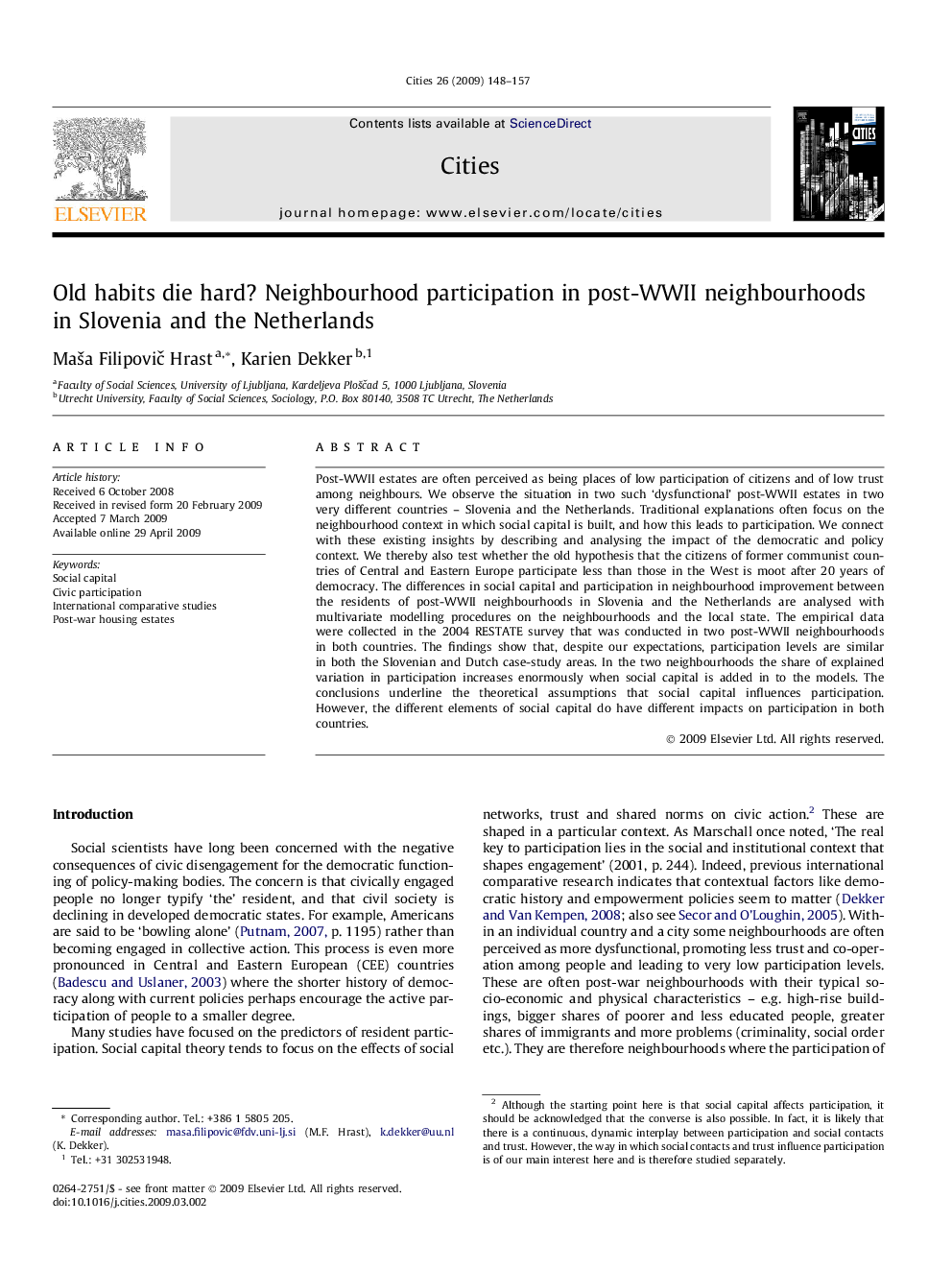| Article ID | Journal | Published Year | Pages | File Type |
|---|---|---|---|---|
| 1008892 | Cities | 2009 | 10 Pages |
Post-WWII estates are often perceived as being places of low participation of citizens and of low trust among neighbours. We observe the situation in two such ‘dysfunctional’ post-WWII estates in two very different countries – Slovenia and the Netherlands. Traditional explanations often focus on the neighbourhood context in which social capital is built, and how this leads to participation. We connect with these existing insights by describing and analysing the impact of the democratic and policy context. We thereby also test whether the old hypothesis that the citizens of former communist countries of Central and Eastern Europe participate less than those in the West is moot after 20 years of democracy. The differences in social capital and participation in neighbourhood improvement between the residents of post-WWII neighbourhoods in Slovenia and the Netherlands are analysed with multivariate modelling procedures on the neighbourhoods and the local state. The empirical data were collected in the 2004 RESTATE survey that was conducted in two post-WWII neighbourhoods in both countries. The findings show that, despite our expectations, participation levels are similar in both the Slovenian and Dutch case-study areas. In the two neighbourhoods the share of explained variation in participation increases enormously when social capital is added in to the models. The conclusions underline the theoretical assumptions that social capital influences participation. However, the different elements of social capital do have different impacts on participation in both countries.
